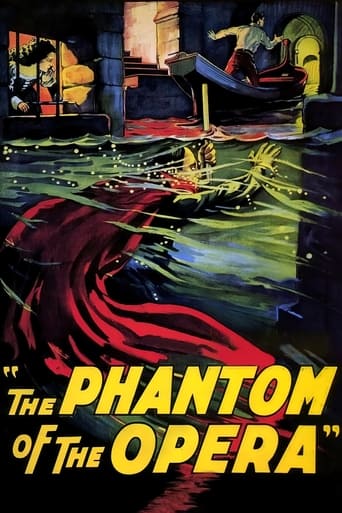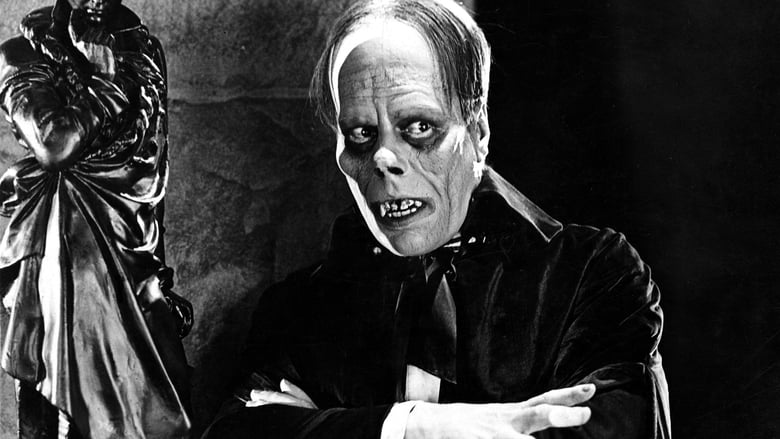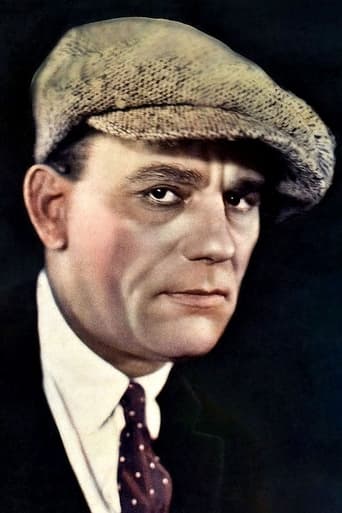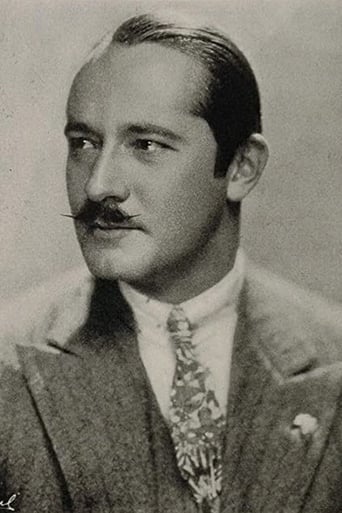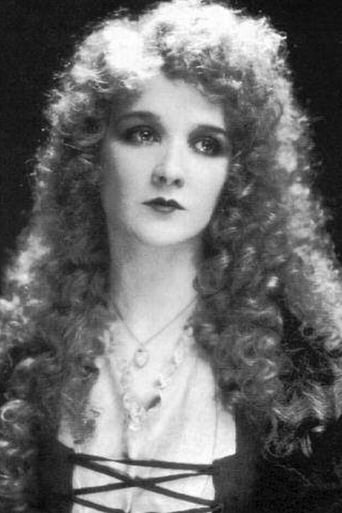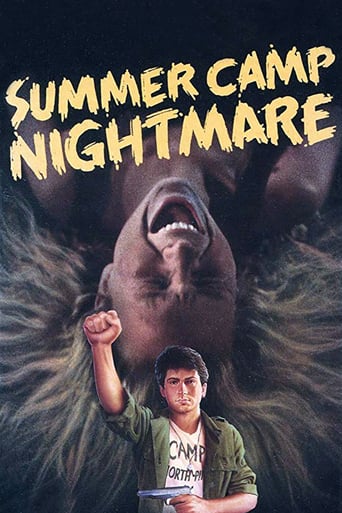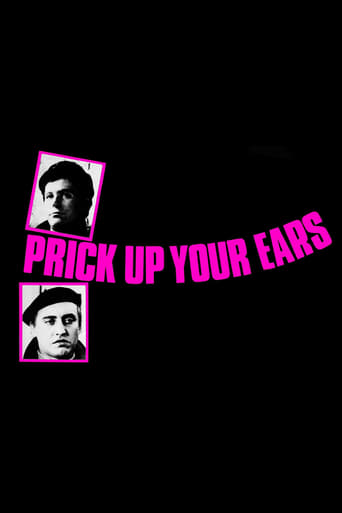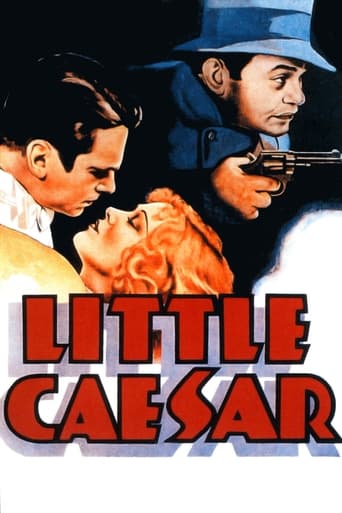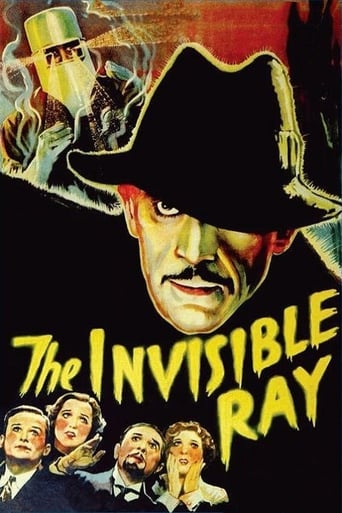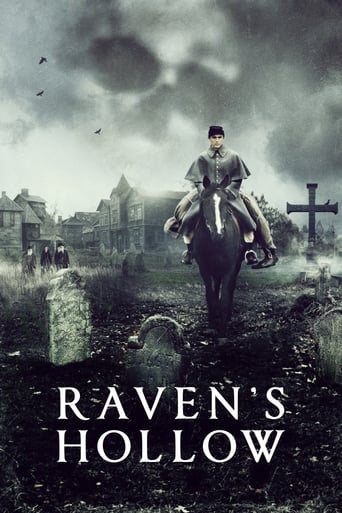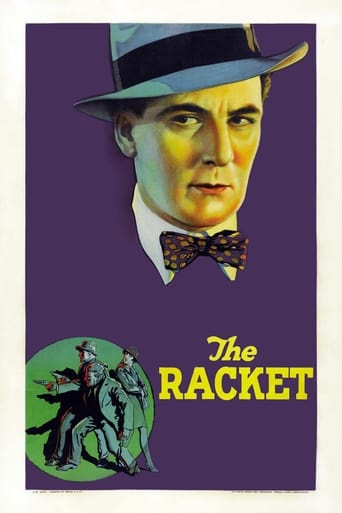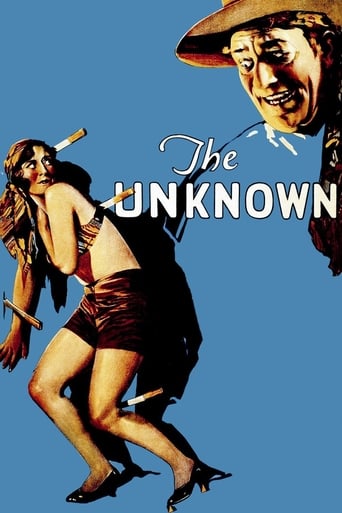The Phantom of the Opera (1925)
The deformed Phantom who haunts the Paris Opera House causes murder and mayhem in an attempt to make the woman he loves a star.
Watch Trailer
Cast
Similar titles
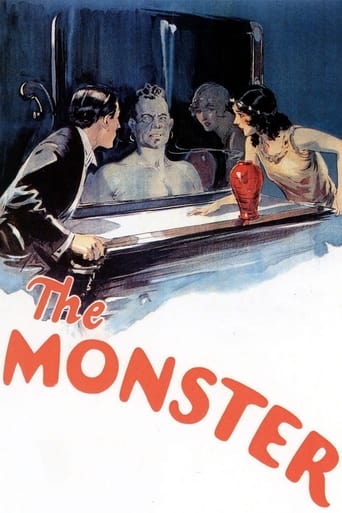
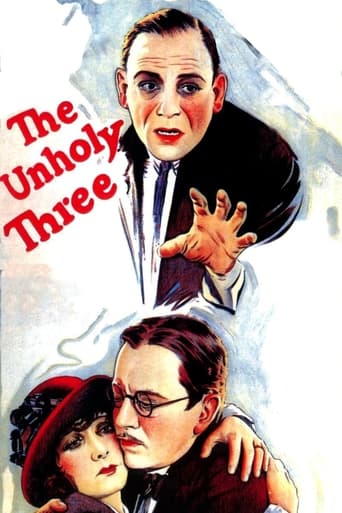
Reviews
That was an excellent one.
Sorry, this movie sucks
Good films always raise compelling questions, whether the format is fiction or documentary fact.
The film never slows down or bores, plunging from one harrowing sequence to the next.
Usually interference and tinkering by a movie studio are tantamount to a disaster. The Phantom of the Opera is the exception that proves the rule. For once, the front office made two big decisions and both of them proved to be correct. The first was a determination not to re-engage Rupert Julian to direct the additional scenes. It was thought that his pacing was too slow and that he had neither the verve nor the know-how to handle the newly scripted crowd climax. So Julian was given the boot and Edward Sedgwick brought in to direct a whole new marking-time opening (which was later deleted in full), plus the Phantom's thrilling escape in the barouche-a sequence that so impressed young Alfred Hitchcock that he copied it almost frame for frame when searching for a suitable climax to The Lodger less than a year later. The second big decision of course was to take advantage of the new sound medium by completely recutting the movie and even re-shooting several scenes. This not only improves the atmosphere, pace and suspense but gives the drama a most effective visual appeal that is often lacking in the original, which depends almost entirely on Chaney's make-up for its power, rather than the magnificent sets, spooky backgrounds and inherent violence of Leroux's story. It also puts Chaney in excellent perspective, not only allowing his performance to have more cleverly suppressed authority than in the original, but setting it against not only the wonderfully awesome catacombs background but contrasting it with the studied innocence of foolishly ambitious yet endearingly sympathetic Mary Philbin. Aside from Kerry and Carewe (and occasional inserts of the opera management), the other players have little to do but front for the vast crowds of extras. Even faces like Snitz Edwards and Gibson Gowland are little more than dutiful props. But, despite remakes and imitations, the film as a whole still works its magic amazingly well.AVAILABLE on DVD through Image/Milestone. The two-disc "Ultimate Edition" features a superb color restoration of the 1929 version, run at the correct speed, yet with the original music track, which, I must admit, I preferred to the alternate Carl Davis score.
So cries the Phantom in the legendary unmasking scene in Rupert Julian's 1925 The Phantom of the Opera. This romantic-horror film about a depressed and horrifically disfigured criminal searching for love and human acceptance from an opera singer has been placed among the greatest stories on human nature. Yes, Andrew Lloyd Webber's 2004 Broadway musical-film is much more popular and seen. In fact, I have seen the musical both in stage and screen form many more times than the Phantom's kill count altogether. Even though Webber's version had the advantages of an enormous budget (over 102 times the cost of the original), he couldn't pull of the trick that Julian had done years before with this one.Unlike Webber's version, we don't see a dashing Gerald Butler with a face only made ugly by word of mouth, but instead we start with fright at Lon Chaney's skeletal Phantom, a horrible, disfigured monster. Yes, his physical hideousness plays a huge role in the plot. This despised monster has lived in the labyrinth of cellars beneath the Paris Opera House for years, tormenting and casting an eerie shadow over the Opera. But his eye is on a young Christine Daae (Mary Philbin), the understudy of the lead singer Carlotta hoping for her big break. Then, after years of planning, he casts the bait. Using his fearful reputation and homicidal talent as a tool, he gives Christine chance after chance of success and turns the ignorant Christine to love and adore him more than her fiancé, Vicomte Raoul De Chagny (the extraordinary Norman Kerry). Reeling in the unsuspecting catch, the Phantom doesn't seem to know of Raoul still desperately hoping and searching.Inherently, the films and silent films of the 20's to 40's were clean, although like Disney's animated movies, they contain some slight and easy- to-miss, suggestive dialogue. But in this Phantom, that dialogue is even fewer and subtler than known of the time. But weighing out that positive is the film's level of horror (still a PG level at the most, for frightening images). Truth be told, the most frightening scene has to be the dreadful unmasking of Lon Chaney's monster; it unexpectedly shocks the audience as much as Christine is alarmed.This Phantom is a murderer, propagandist, manipulator and a seducer. Though not seen for decades, he was the actual landlord of Opera House, collecting rent from the managers and haunting Box 5 of the theatre. As the story goes, the Phantom was an escapee from an insane prison only wishing to be loved and accepted like every other man, Erik by name. The original ending had the Phantom found at his organ, dead from a broken heart. This ending crafted the Phantom to be a more romantic and more human character, but was discarded for a climactic chase kept in the release. The version that I included here is the shorter 1996 re-release with Carl Davis' re-score. Still, the Phantom's morbid romantic fantasies stick to us along as much as Chaney's astonishing make-up tricks. So, choose a version on YouTube, switch the sound off, turn on your favorite "scary" music and watch along with your significant other.
Favorite Quote - "His eyes are ghastly beads in which there is no light - Like holes in a grinning skull!" Released in 1925 - With Lon Chaney's compelling performance, as "The Phantom", being one of this picture's strongest assets, here is a production (filmed on a grand scale) that I'd say was one of the most civilized and cultured horror movies of all time.Set in and around the magnificent Paris Opera House (in Paris, France, of course), this tragic story of obsession, revenge and unrequited love is both a finely-tuned and nicely-paced tale that holds the viewer's rapt attention right from its eerie and intriguing opening, to its climatic finish with the angry mob in hot pursuit of "The Phantom", who is fleeing for his life.This is a film that is certainly not short on riveting drama.Besides the scene where "The Phantom" brings down the massive chandelier onto the heads of the opera-house's audience - The scene where Christine Daae tears away "The Phantom's" mask to reveal the hideous ugliness below, has got to be one of the most shocking moments in horror-movie history.Now 90 years old, I highly recommend this film to anyone who enjoys a genuine scare in the good, old-fashioned way, sans guts-n-gore.
The Phantom Of The Opera has long been a staple in the classic horror movie circles, and for good reason. The film is not short on any spectacle, the plot and pacing keep the viewer riveted to the screen for the entire duration, and as always Lon Chaney is on top form in his horrific role as The titular Phantom. The real interest to be derived from this film in the modern day and age where spectacle is certainly not lacking, however, comes from the many conundrums that it produces within the savvy film-goer.The film is by no means a masterpiece of art; it fits very squarely in the Hollywood tradition of narrative structure and shooting style built around the desire for easily digestible entertainment and profit. A ghostly phantom haunts the forgotten passages and torture chambers beneath the Paris opera house and abducts a beautiful young singer (Mary Philbin) to force his love upon her, leaving her to be saved by her one true love (Norman Kerry). You would be hard pressed to find a story which asks less mental activity from the viewer.But, while this holds true, the direction of the piece contains a mode of art which is not readily apparent with a surface viewing. Yes, Chaney's camp flailing adorned, as he is in mask and cape, is thrilling and more than a little humorous, but his eerily understated presence in the colour tinted masked-ball scene shows a much deeper understanding of the form. Likewise do the unexplained plot leaps and shocking make-up close-ups point to a schlock sensibility while at the same time the expressionist shadows creeping along the claustrophobic corridors of the Phantom's lair make a viewer think of the works of Murnau or Lang.The Phantom Of the Opera presents itself as the most intelligent of nonsense films or, contrariwise, as the stupidest of artistic visions simultaneously, and this, I believe, is one of the reasons that this movie remains so interesting today. I mean, plenty of silent horror films were made during this period (many of them, like Phantom, made by Universal Studios), but for some reason this is the one that has gone down through history and ingrained itself into the popular consciousness. The question mus be asked, "why is this? Why do I know this movie so well instead of others?" and it is the artistic flair mixed in with the highest camp of the horror genre that provides the answer.One instinctively rolls their metaphorical eyes at the ludicrousness of the japes and capers taking place before them, but their eyes cannot help but be drawn into the immense beauty and skill that has gone into each and every shot. It is aesthetically thrilling and intriguing as it is daft and hammy, and this is what makes the films as a whole so incredibly interesting.I suppose this may be a mere symptom of becoming too deeply entrenched in film studies and that my mind is just being drawn towards unnecessary dissection, but I would argue against this. Either way I would highly recommend seeing The Phantom Of The Opera in order to make up your own mind about its value artistic or otherwise.
